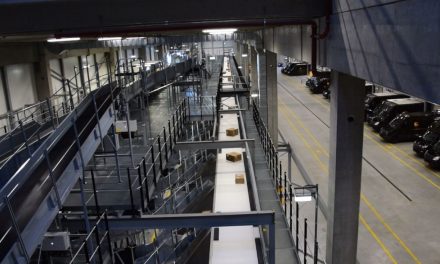
Amtrak mobilises for a new global push
The international sector looks likely to remain the major focus of attention this year for Amtrak Express Parcels. Traffic doubled in the second half of last year after the company relaunched its international services, helping to shield it from a domestic marketplace in which volumes for most operators are flat and prices falling.
Figures compiled by CI Research in December give Amtrak a 3.4% market share of the total next-day delivery market and 2.5% of the total express market by revenue.
Whatever the reasons for the departure of MD Will Odling late last year — and Amtrak is not commenting publicly — under-performance would not seem to be among them. Turnover grew by 8% to £75m (€120m) last year and the company is targeting £100m (€160m) by the end of 2004.
Some 15% of the company’s business is now international and sales director Julian Lebray says Amtrak International, formerly known as
Airtrak, “has been our main priority over the last six months”.
The relaunch in July followed a co-operation agreement with Skynet Worldwide Express. Amtrak claims it can now offer export customers faster service to more than 180 countries, but it is the clearer, simpler tariff and a motivated salesforce which is responsible for much of the growth.
“The international product had been on the back burner and our pricing was ad hoc, but we have standardised it and made it more marketable,” says international general manager Mark Bennett. “We mobilised our regional managers to brief all depots and ‘mobile’ franchisees and put in place an incentive programme which has led to a big upturn in business.”
Air parcels were previously consolidated at Heathrow, but Amtrak’s hubs in Dunstable, Bedfordshire, and Aldridge, West Midlands, now act as gateways, allowing Amtrak to use integrators’ flights out of regional airports, which Bennett says “puts us in a great position to offer a next-day European product”.
The company’s third domestic hub, in Rawtenstall, Lancashire, will soon have gateway status too.
While the main growth potential is seen as lying within Europe, Amtrak is also gaining more control over longhaul destinations such as the US. “Under the initial agreement, Skynet was responsible for the linehaul, but this will change so that it is only doing local delivery;” says Bennett.
He is now also looking to promote an inbound product for
next-day pre-noon delivery through a series of service partners.
Not all the prospectives are yet owned by post offices or tied
up in pan-European alliances, he points out: “Specialists remain in individual countries and we will look to pair up with them.”
The company has 120 depots across the UK and 240 franchisees — an unusual structure thanks to the mobiles who can purchase individual runs rather than complete districts.
Lebray says this breadth of network gives “massive scope” for add-on services. “We’re not tied up in a handful of huge accounts — we’ve got 30,000 customers,” he says.
An even bigger network was envisaged when Amtrak
acquired Nightspeed in 1999. The then chief executive Mick Jones wanted to merge the two businesses under a single identity — an idea the company did not ultimately pursue. “An owned and franchised merger is difficult,” says Lebray, citing the similar issues faced by Geopost in amalgamating Parceline and Interlink.
Amtrak’s volumes are relatively buoyant. In the run-up to Christmas, the company handled a record 62,000 parcels one night and is averaging 45-
50,000.
Lebray estimates domestic rates have fallen by around 10% over the past year, but says Amtrak is not getting sucked into the worst of it. “There is pricing out there which we’re not entertaining. We’re not afraid to turn away business,” he says.
The company has kept its focus on premium 9am, lOam and noon deliveries, avoiding deferred services — “it’s difficult to slow our systems down” — and ugly freight, which does not fit its automatic sorting systems.
The main investment this year will be in IT and transport. Amtrak will update much of its fleet of 300 trunkers and 1,000 local delivery vehicles, and aims to make all its services available over the Internet, so that customers no longer need specialist hardware.













